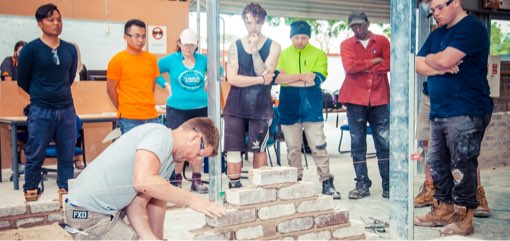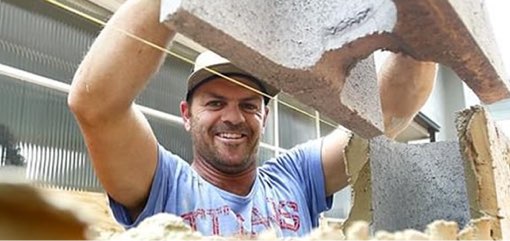Important Information about Bricks and Bricklaying A bricklayer
In addition to having finished an apprenticeship and receiving official certification, is required to have a high degree of physical endurance and manual dexterity. Bricks may be used for both walls and floors, thus projects that include their utilization need the services of trained labourers like bricklayers. Such pursuits are more often carried out in the open air.
Bricklayer skills include being able to read plans and schematics, taking accurate measures, using the correct mortar, and laying bricks correctly. Using power tools to cut and fit bricks is another approach. Apprenticeship-trained bricklayers may function alone or as part of large teams on complex building projects.
The ability to lay brick for both walls and floors is crucial for any bricklayer
Success in this position needs physical endurance due to the frequent heavy lifting that is required. The amount of stooping, lifting, and changing of position is considerable. Regular exercise has the potential to increase muscular strength and stamina, both of which may help reduce the strain on the body. If your profession entails a lot of physical labour, you may find that this helps alleviate some of the aches and pains you experience. The Bricklayer apprenticeship program is crucial in this region.
Bricklayers create and repair brick or stone walls, chimneys, and other masonry structures
Bricklayers often work on private residences like homes and flats, but they are also vital to the creation of public and commercial institutions like hospitals and schools, where they install features like chimney stacks and tunnel linings. Typically, a bricklayer would work on residential buildings, such as a home or apartment complex. Stone, concrete blocks, and precast panels are also at their disposal. Bricklaying and blocklaying are two trades that might find work in this area.
What duties do bricklayers have?
Many bricklayers have common abilities that make them all competent in their fields. We reviewed the resumes to discover the most often reported talents and work history. We found that a lot of people were interested in highlighting their ability to multitask, their lack of fear of heights, and their excellent colour vision in their application.
The Step-by-Step Guide to Entering the Bricklaying Profession
One of the first things to consider if you want to be a bricklayer is how much schooling is needed for the position. Research we did showed that 9.7 percent of bricklayers have degrees from four-year institutions. Compared to other professions, the proportion of bricklayers with master's degrees was quite low, at 1.7%. Some bricklayers have advanced degrees, but a high school diploma will do just well if you want to get started in the field.
Really Need to Start Laying Bricks
The great majority of bricklayers enter the profession via apprenticeship programs. Although certain businesses may have more stringent standards than others, most will demand some kind of certification to get entry. Choose the Brick and Blocklaying Careers there.
Conclusion
Bricklayers in several countries and regions need to be registered as building practitioners or at least operate under the supervision of someone who is. The Construction Induction Card is a mandatory part of the credentials of everyone working in the construction business.





Comments
Post a Comment